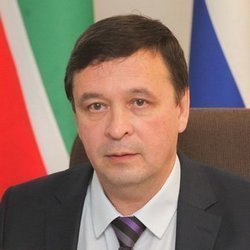‘Nobody knows the real numbers’: six million Tatars in Iran, Pakistan and Afghanistan?
Rustam Khabibullin, the director general of the charitable patriotic foundation of Muslims, the only organisation from Russia that is currently registered in Afghanistan, said in the interview with Tatar-inform that the Tatar communities of Afghanistan, Pakistan and Iran have announced plans to create a united Council of Tatars. At the same time, the Afghan community has about three million people, the Iranian community has about a million, and the Pakistani community has more than two million. Realnoe Vremya has analysed how real these figures are.
Afghanistan — unlikely, Iran — yes
According to Azat Akhunov, a senior researcher at the Institute of the Tatar Encyclopedia, the census in Afghanistan has not been conducted exactly for the last 50 years, and some Afghans who actively position themselves as Tatars have absolutely nothing to do with the current Tatars.
“Assumptions can be any, because no one knows the real numbers. Ethnicity has begun to be indicated quite recently, the last few years," said the senior researcher at the Institute of the Tatar Encyclopedia. “No one can say yet how many of them there are. They are just the same Afghans as the rest. Perhaps, according to some versions, these are Tatars who have moved here since the time of the Golden Horde, with the exception of that group of Kazan Tatars who ended up in Afghanistan after the revolution. It is unrealistic to talk about some millions here, unlike, for example, in Iran. There are a large number of Tatars in the northern provinces of Iran. But they, to some extent, have already lost their identity, too, they have been turkmenised.”

“There is no information about Pakistan, except for those Tatars who were fanatics in the 1990s or were captured during the period when the Soviet Union fought in Afghanistan," sums up Azat Akhunov.
“Most likely, they go back to the medieval Tatar community”
The director of research at the Institute of History, Radik Salikhov, said that no one has ever accurately counted these groups, but they are densely populated.

There are not so many Tatars in Pakistan and Afghanistan
According to Iskander Izmailov, senior researcher at the Department of Medieval Archaeology at the Institute of Archaeology, to answer the question about the realism of the figures, it is necessary to study the way of life, life and language of the Tatars there. Therefore, he noted the need to create a group at the Institute of History to study this issue with the financing of scientific trips. To plan any further actions, it is necessary to roughly estimate their number, identity and culture.
“Since the census is conducted in these countries in a rather peculiar way, all these figures are largely estimated. As for the Iranian Tatars, they are, indeed, Tatars who in the 17th—18th century left the Volga region from Christianisation and settled in the area of modern Mashhad, making up several mountain villages. I don't think their numbers are significant there, of course, there are no millions there, much less. But this does not negate the fact that our compatriots live there and are of considerable interest, including for historians, philologists," Iskander Izmaylov said.

“While living in their new homeland, they, of course, lost their language and culture. Whether they can be attributed to the Tatars — a big question. I have serious doubts about whether they want to relocate in some way or interact in some way.
In March 2021, the Afghan government added the nationality column to the passport — and about half a million people registered themselves as Tatars. According to Khabibullin, at that time, Afghanistan was on the verge of famine and millions of Afghans were under threat of existence. In October 2021, he held a press conference where he said that, in his opinion, Tatarstan should establish its representative office in Afghanistan to provide assistance to local Tatars — and this is flour, sugar and sunflower oil. The foundation organised the teaching of the Tatar language in two local schools. The Afghan Tatars offer Tatarstan to organise the extraction of minerals on its territory, take under its wing the production of companies that have left the country, and become the main partner in the logistics of Russian and Afghan products.